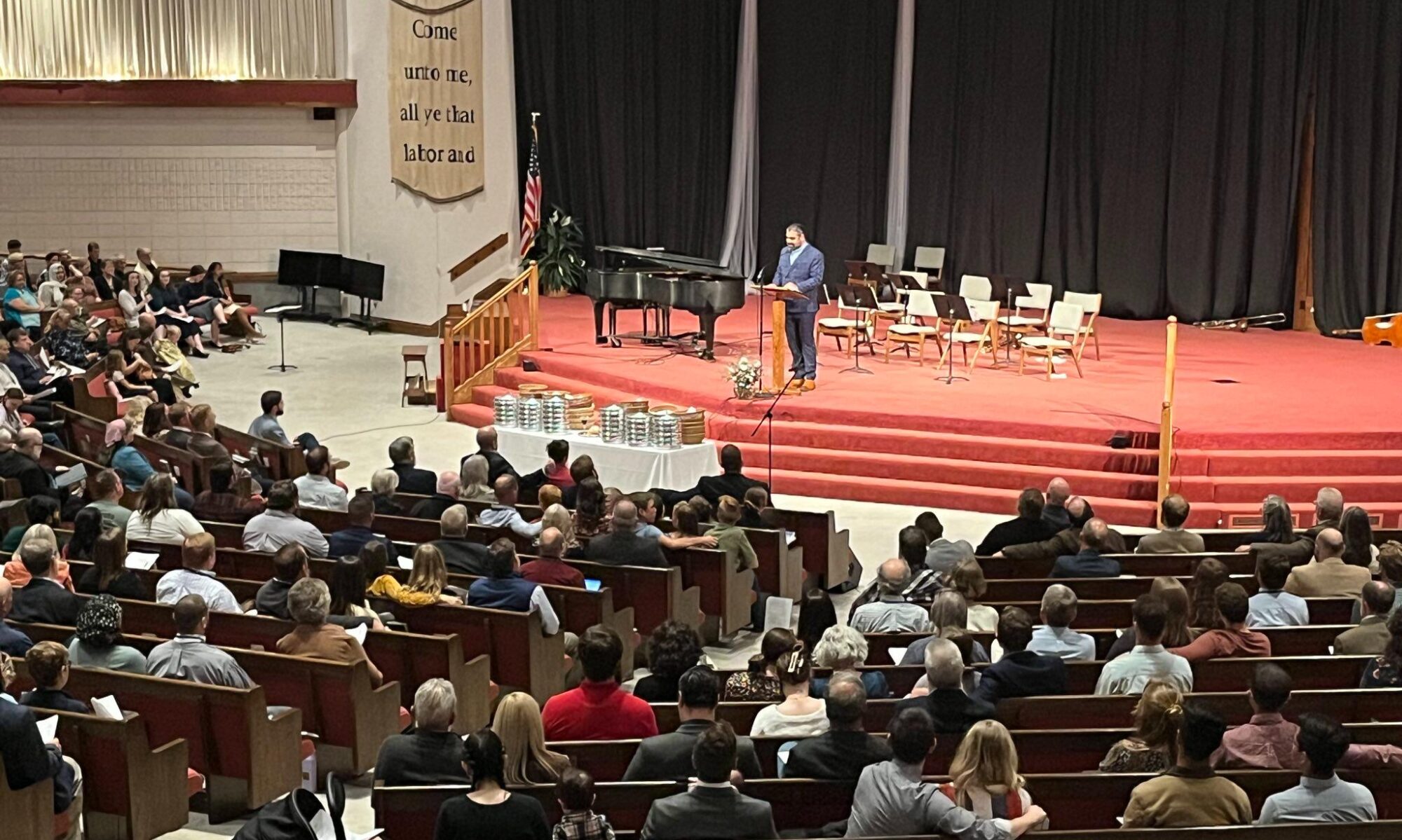Last night we had the honor of attending the send-off party for the Jordan family as they move to Birmingham, AL. Jim and Brenda Jordan have been dear friends of mine and my church community for some time. During my first three years as pastor I had the privilege of working side-by-side with Jim at Providence. He was especially encouraging in that first year. Not only did he add his tremendously musical gifts to our congregation, but his Sunday School series for those three years were life-changing.
Part of what Jim Jordan brings to the table is a life-long commitment to Sola Scriptura. He is, to borrow John Frame’s language, a true biblicist. He bleeds biblical theology. The fact that he does not simply repeat old slogans and the sheer fact that he is so innovative in the field of biblical theology make him a target to many.
His book Through New Eyes offers a profoundly rich theology of symbols; a theology, which if embraced, will make Bible studies not only fascinating, but will make the student of the Bible enlivened to read the Bible again and again and to find connections that affirm the remarkable onenes of biblical revelation.
 Many have attached the hermeneutic of interpretive maximalism (Hence IMax.) to James Jordan’s theology. In his 1990 article What is Interpretive Maximalism, Jordan affirms that this hermeneutic contrasts with the minimalist interpreter. David Chilton is his famous Revelation commentary was the first to apply directly the rich nature of Jim’s theology to John’s inspired account. Jordan himself had already given a clear example of that hermeneutic in his Judges commentary, which Chilton references.
Many have attached the hermeneutic of interpretive maximalism (Hence IMax.) to James Jordan’s theology. In his 1990 article What is Interpretive Maximalism, Jordan affirms that this hermeneutic contrasts with the minimalist interpreter. David Chilton is his famous Revelation commentary was the first to apply directly the rich nature of Jim’s theology to John’s inspired account. Jordan himself had already given a clear example of that hermeneutic in his Judges commentary, which Chilton references.
In fact, in his Judges commentary he contrasts his approach to the modern evangelical one:
“We have to explain this [i.e., the business about types and prophecies] in order to distance ourselves from the interpretive minimalism’ that has come to characterize evangelical commentaries on Scripture in recent years. We do not need some specific New Testament verse to `prove’ that a given Old Testament story has symbolic dimensions. Rather, such symbolic dimensions are presupposed in the very fact that man is the image of God. Thus, we ought not to be afraid to hazard a guess at the wider prophetic meanings of Scripture narratives, as we consider how they image the ways of God. Such a `maximalist’ approach as this puts us more in line with the kind of interpretation used by the Church Fathers.”
So, part of James Jordan’s controversial hermeneutic is an attempt to affirm the inherent beauty of the Old Testament narrative without depending on some New Testament affirmation. Further, as Jordan writes, IMax. offers a richer Old Testament narrative, since the typological images offer a fuller and more robust picture of Christ in the pages of the pre-AD 70 world.
Jordan sees the grammatico-historical interpretation to be valid, but incomplete without the aid of a rich biblical theology. And this was part of what led his break with some of the well-known theonomic figures. Jordan writes:
I think that those who take this kind of typology seriously are the only people doing justice to the Biblico-theological dimension of interpretation, and my criticism of the Bahnsen-Rushdoony type of “theonomy” is precisely that I don’t think they do justice to this dimension. In common with most of my teachers, I believe that the grammatico-historical “methods” of interpretation need to be complemented by Biblico-theological considerations, and that is what I have sought to do in my own work. (On “theonomy” see James B. Jordan, “Reconsidering the Mosaic Law: Some Reflections — 1988,” available from Biblical Horizons.)
In conclusion, James Jordan uses the term maximalist as a way of communicating that the Bible reader can gain more from the pages of Scripture than they can ever imagine. The Bible is given to us by the Holy Spirit, and the Spirit does not waste his breath. His inspired data is not given simply to fill in empty space, but to provide a fuller and more beautiful portrait of the Gospel.


 Many have attached the hermeneutic of interpretive maximalism (Hence IMax.) to James Jordan’s theology. In his 1990 article What is Interpretive Maximalism, Jordan affirms that this hermeneutic contrasts with the minimalist interpreter. David Chilton is his famous Revelation commentary was the first to apply directly the rich nature of Jim’s theology to John’s inspired account. Jordan himself had already given a clear example of that hermeneutic in his Judges commentary, which Chilton references.
Many have attached the hermeneutic of interpretive maximalism (Hence IMax.) to James Jordan’s theology. In his 1990 article What is Interpretive Maximalism, Jordan affirms that this hermeneutic contrasts with the minimalist interpreter. David Chilton is his famous Revelation commentary was the first to apply directly the rich nature of Jim’s theology to John’s inspired account. Jordan himself had already given a clear example of that hermeneutic in his Judges commentary, which Chilton references.